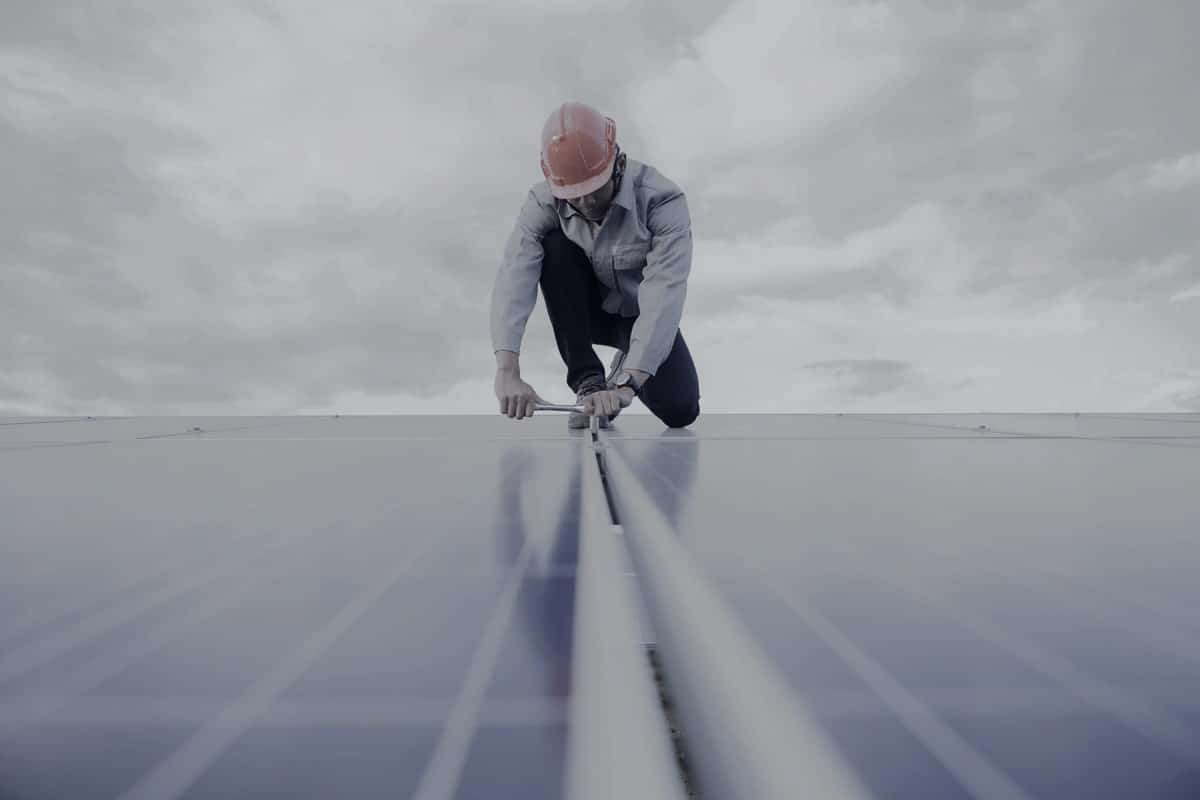Tesla made big waves in June when it unveiled its updated aggressive solar pricing strategy – with one, basic installation offering at a market-leading price. There’s been significant and thoughtful analysis about this approach’s durability, strategy and ability to revive Tesla’s solar business. However, it’s interesting and bold enough to explore what it tells us about the solar market in the U.S.
First, some context. The work of the over 10,000 installation companies in the U.S. residential solar sector covers every state, but ranges widely in coverage and annual installation capacity. We can segment these installers into different categories:
- Nationals – Such as Sunrun, Momentum and Tesla
- Super Regionals – Companies that cover multiple states in a geographic concentration, such as the Northeast or Southeast
- Regionals – Installers that cover an entire state or metro area
- Longtail – Smaller companies that might only cover a county or a smaller metro area
In a normal year, longtail businesses coexist alongside nationals because they appeal to different consumer segments. While the national players benefit from lower-component pricing and access to different financial products, smaller installers have significantly lower overhead. That’s particularly true when it comes to customer acquisition, an increasingly larger percent of a solar installer’s costs. Sunrun’s customer acquisition costs were reported to be over $1.00 per watt prior to its acquisition of Vivint, and reducing those costs was one of the stated principal reasons that Sunrun acquired Vivint’s residential solar business.
Tesla’s announcement comes in a year that has been anything but typical – a pandemic, resulting in market slowdown and supply chain disruptions, as well as a major acquisition deal in the industry.
So, what does Tesla’s pricing approach mean for the other 9,999 companies in the sector – and how has homeowner thinking changed since the pandemic?
Consumer psychology and solar purchases
LG launched its “solar concierge” service around the same time as the Tesla announcement. This virtual solar sales service is providing a bigger window for LG into the homeowner thinking that installers have studied for years – and how things have changed in the new, remote-selling environment.
We’ve already noticed that consumers in more mature solar markets, such as California and the Northeast, are more apt to purchase solar without an in-person visit. Those markets have tipped beyond “early adopter” buyers and into a pool of homeowners who care less about being the first to go solar in their neighborhood and more about not missing out on the money-saving investment of going solar.
We commissioned Harris Poll to collect insights into consumer views in this new era. Homeowners who now consider going solar say they see it as a long-term investment, not an up-front purchase. Let’s call them “solar investors,” and they represent roughly 70 percent of the market. For them, upfront cost is the fourth most important purchasing factor, trailing performance, utility bill offsets and long-term value.
At the same time, research shows Tesla has an extremely valuable brand, with high consumer trust. Combined with a published price point that’s more than $1.00 per watt below the industry average, and Tesla competitors must acknowledge Tesla’s new pricing strategy could have big appeal to consumers for whom solar is an up-front purchase. Let’s call them “solar buyers.”
Solar education – the key to winning “solar investor” homeowners
The average homeowner receives three quotes before making the decision to “go solar.” Solar investors see solar as “confusing” and “complex.” Successful installers reading this already know their market expertise helps reassure customers that their installer can be relied on as a trusted advisor. Consumers have actually asked LG’s Solar Concierges to help explain competitor quotes that they didn’t fully understand.
Tesla’s model is well positioned to win with solar buyers, consumers who want to buy solar with mouse clicks. Solar investors place a high priority on individualized education to resolve their concerns about going solar. The questions we get tell us that homeowners are better served through transparent sales-qualification questions and a focus on customer education. They migrate customers away from things solar investors don’t want – templates and low-cost designs – and over to a high-touch, consultative sales process that meets their information needs through personalized conversations that design solutions to meet homeowners’ unique requirements.
In short, “one size” could provide a strong fit for solar buyers, but not solar investors – who currently comprise 70 percent of the market.
Time will tell if Tesla’s pricing strategy is effective enough for consumers to take a “one size” offering in the long run. In the near-term Tesla reported doubling its solar installations in Q3 relative to Q2 of this year. There’s no question that their move is prompting the industry to take a hard look at pricing strategies for further cost optimization. That’s a good thing, because lower residential solar costs expand the collective market. Although upfront cost was ranked fourth in purchase motivations for solar investors, it was the number one reason why a consumer who had reviewed solar proposals opted not to move forward, according to Harris. The paradox here is cost out must be achieved without sacrificing quality or long-term value because the majority of solar customers care more about long-term benefits than upfront price.
Now’s the time for larger sales and installation organizations to invest in building out a template design that’s easier to sell and faster to permit and install. That doesn’t necessarily mean using the lowest-cost components. Installers will still have to offer good value to their customers with confidence-inspiring products and consumers still care about quality. Through standardization and automation of customer acquisition and installation you can likely achieve significant operational cost-out to a much greater degree than just buying the cheapest components, and with far less operational risk. Organizations that are successful with this will have created value without sacrificing quality.
For smaller installation companies, it’s time to double-down on a personalized sales experience as a trusted, local solar installer who does good work, breaks down barriers and explains solar in user-friendly terms. Customers will pay a premium to alleviate their concern of not purchasing the right thing.
Whether or not Tesla’s new strategy is successful, the whole industry will benefit from a big-name company running a real-time experiment with a pre-designed, template pricing model. We all should thank them for the extra incentive to sharpen the tools needed to win homeowners with the investor’s education-intensive approach, not a demand for the lowest-cost purchase.
***
Brian Lynch leads solar business development for LG Business Solutions USA, the B2B division of LG Electronics USA.
The views and opinions expressed in this article are the author’s own, and do not necessarily reflect those held by pv magazine.
This content is protected by copyright and may not be reused. If you want to cooperate with us and would like to reuse some of our content, please contact: editors@pv-magazine.com.








I have a lot of respect for Tesla as a company. I don’t feel that sellling based on price, or in Tesla’s case at $1/W below the industry average, will ever be a recipe for success-regardless of brand. My recommendation to long tail installers, and what most are doing, is differentiate yourself from the national’s, be efficient and sell at a competitive price-and delight your customers with offerings and treatment that are above and beyond what big-box installers offer. One-size fits all solutions won’t be successful for long.
It’s not what Tesla’s model provides, it’s what it avoids. Yes, price is only 4th on the customer’s priority list, but you know what’s reported as far and away the most painful aspect of “going solar”? The bloated and confusing traditional sales process.
In order to buy something, a customer has to understand their needs and what the market is offering. These bloated sales teams hold both ends of that hostage until a customer commits within their one-to-one sales process and their commission is secured. It’s single-handedly keeping US residential solar from scaling.
Imagine you’re an intelligent consumer doing research. After you get through all the mess of the heavy sales teams, and you start comparing prices, think how confusing it must be to see a price from Tesla that’s 1/3 cheaper than everyone you talked to. Add on top of that they’re all likely bad-mouthing Tesla’s product to gain sales.
Tesla has once again simply done what’s needed for the market as a whole to scale. They’re killing off the heavy sales process, making it impossible for the Sunrun and 3rd party marketing business models to survive. Everyone will be healthier on the other side.
Tesla is doing what SolarCity did… digging itself in a money-loss spiral that only hurt the industry and the customers. Lowering the price to a level where they make no money (just to get deals) is a really bad long-term strategy. Eliminating the customization of the system size and equipt types/brands is also terrible as each needs different solutions.
And… this is not working… as they market share is continuously negligible.
Sunrun’s sales cost is half the total pricetag of a Tesla install…..and whose model is money-losing? The rest of the world is installing at $2/Watt with minimal sales cost, Tesla is now doing the same. A great start that just needs a bit more flexibility and better service.